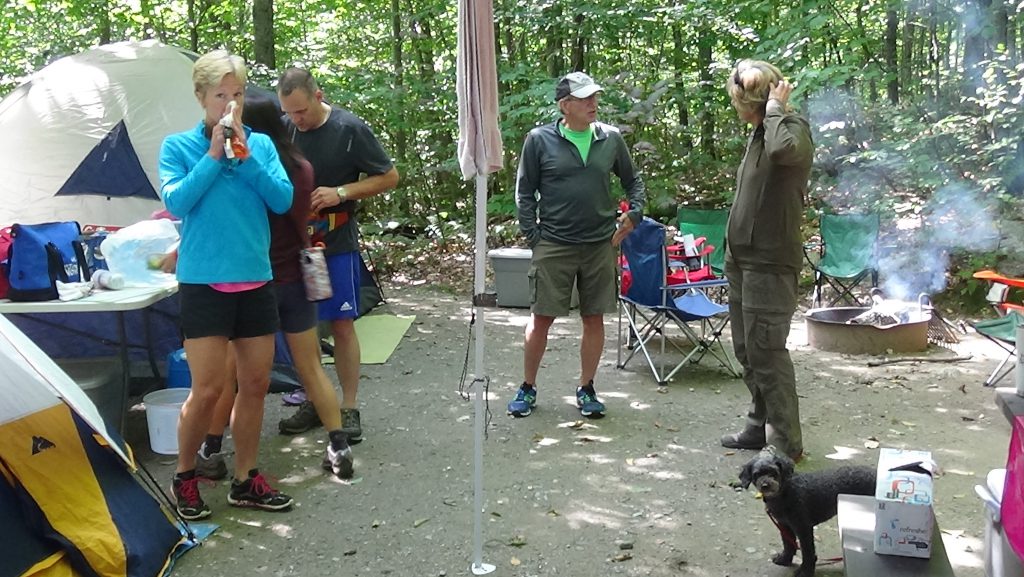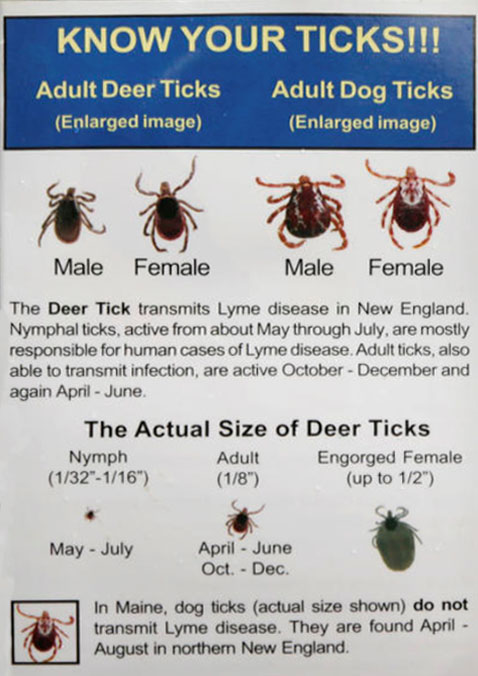Little Camper Bonnie loved to go Camping
Bonnie the little camper was a cherished miniature poodle mix who delighted in camping adventures with her owners, Charles and Susan Oropallo. She enjoyed being part of the group, exploring new environments, and sleeping in tents.
Due to the prevalence of ticks in New England, especially deer ticks that can transmit Lyme disease, Bonnie’s owners ensured she received monthly medication to repel these pests. This preventive measure was effective, as ticks would quickly detach from her. Her camping experiences, particularly at Smuggler’s Notch in Vermont, were filled with joy and companionship, reflecting her adventurous spirit and the loving care of her family.

Bonnie seemed to enjoy a hike better, but was certainly okay with camping as well. She just loved being around a group of us.
Bonnie didn’t seem to mind sleeping in the tent. When Charles and Susan took Bonnie camping they kept Bonnie on her leash. Bonnie otherwise wanted to run off and explore everything!
Camping, like hiking, is another activity that presented the hazard of ticks for Bonnie. Of course, the tick hazard is one for us humans as well! Please check out Bonnie’s hiking page where there is a little more information about the types of ticks in the New England. Charles saw this sign on a hike with Bonnie that points out information about adult deer ticks and adult dog ticks:

Doggie Camping Tips
Camping with your dog can be an incredible adventure, especially when you’re accompanied by a cheerful malti-poo like Bonnie. However, to ensure a safe and fun trip, a little preparation goes a long way.
-
- Pack Essentials for Your Pup
Make sure you bring everything your dog might need: food, water, a collapsible bowl, leash, poop bags, a comfy bed, and any medications. It’s also wise to pack a first aid kit that includes items specific to your dog, such as paw balm or bandages for cuts. - Choose Dog-Friendly Locations
Research campgrounds that allow dogs and have pet-friendly trails. Many national and state parks are welcoming but may have leash requirements or specific dog-accessible areas. - Keep Them Comfortable
While camping, ensure your dog has a shaded, cool spot to rest and enough water to stay hydrated. A lightweight blanket or sweater might also come in handy for cooler evenings. - Practice Good Trail Etiquette
Always leash your dog unless it’s a designated off-leash area. Respect wildlife and clean up after your pup to keep nature pristine. - Prepare for Emergencies
Familiarize yourself with nearby veterinary services in case of emergencies. Additionally, make sure your dog’s ID tags are up-to-date and consider a GPS collar for added peace of mind.
- Pack Essentials for Your Pup
With a bit of forethought, camping can be a rewarding experience for both you and your furry friend. After all, every campsite feels like a new adventure when seen through the eyes of a happy pup like Bonnie!